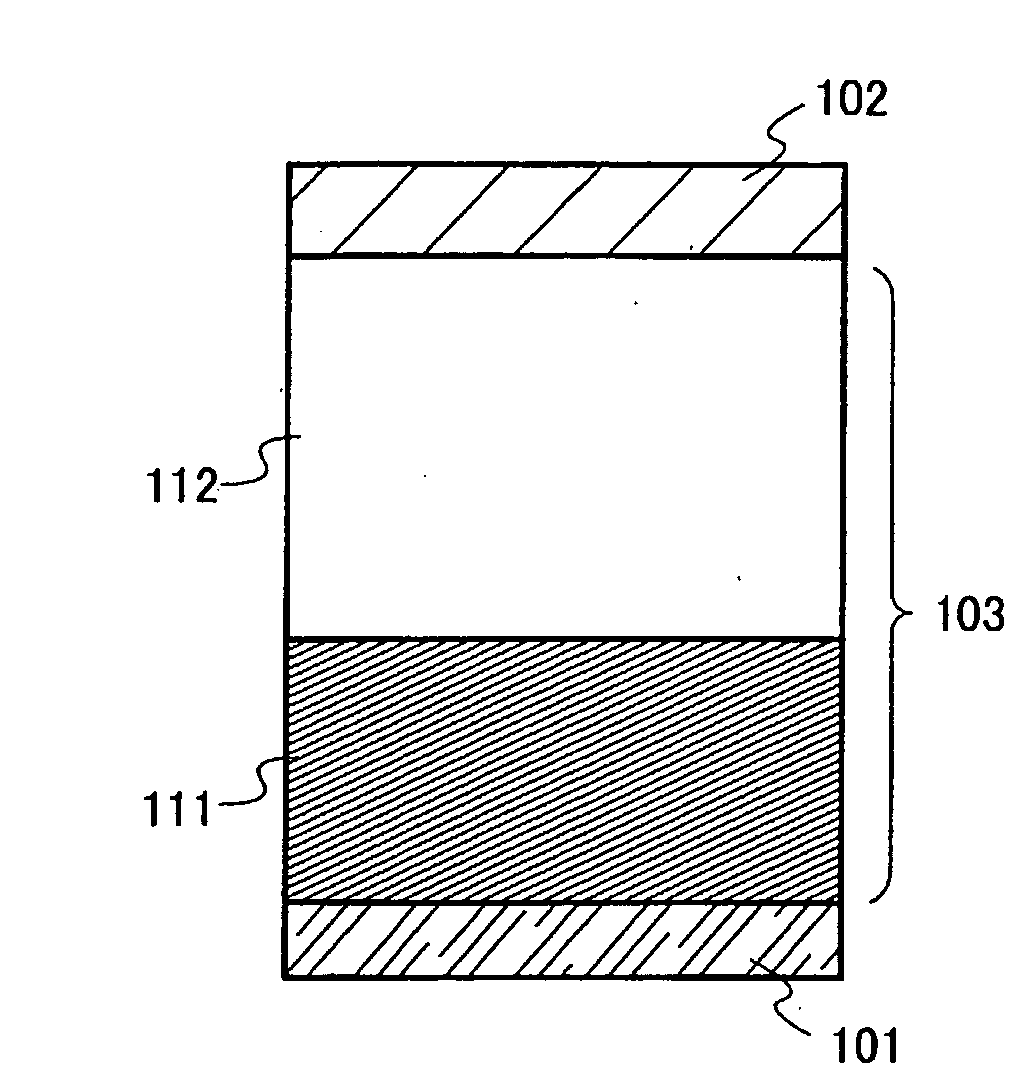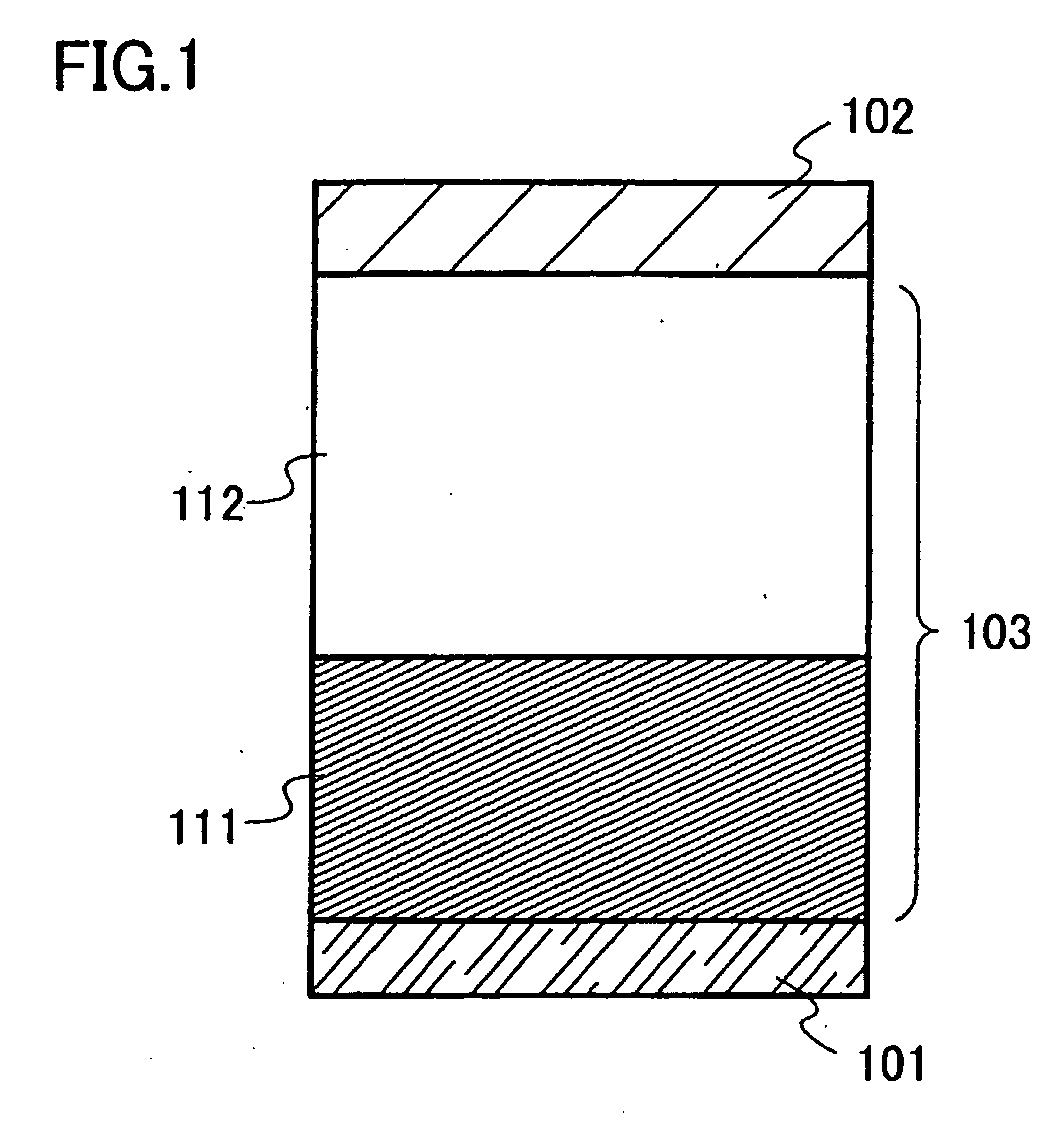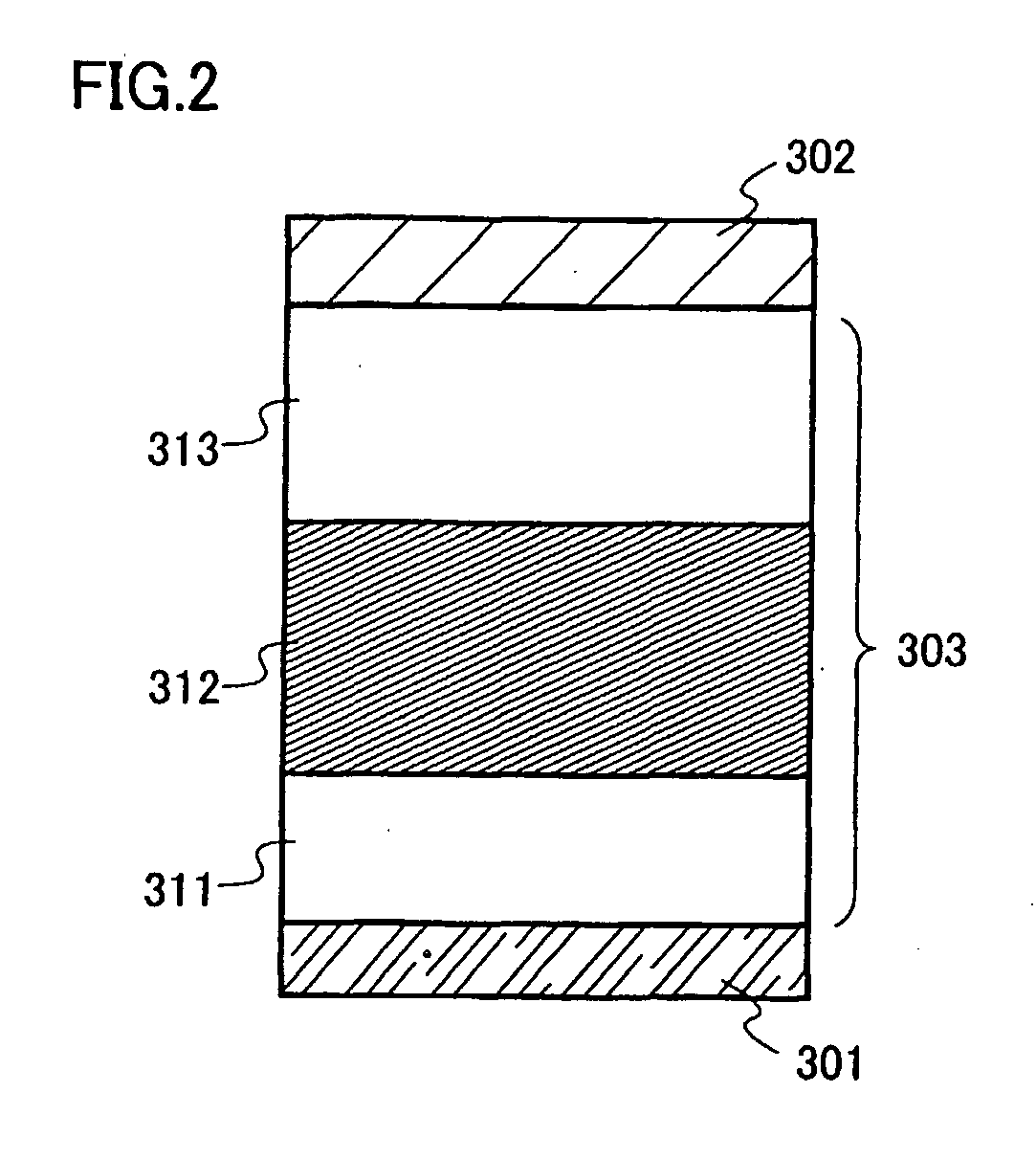Composite Material, Light Emitting Element and Light Emitting Device
a technology of light emitting element and composite material, which is applied in the field of composite material, can solve the problems of poor transmittance, reduced power consumption, and many challenges, and achieve excellent carrier injecting property, excellent carrier transporting property, and excellent transparency
- Summary
- Abstract
- Description
- Claims
- Application Information
AI Technical Summary
Benefits of technology
Problems solved by technology
Method used
Image
Examples
embodiment mode 1
[0044]A structure of the composite material of the present invention will be described. The composite material of the present invention is a composite material of an organic compound having a particular skeleton and an inorganic compound. There is no limitation for a manufacturing method of the composite material of the present invention; however, it can be formed by a co-evaporation method where the organic compound and the inorganic compound are deposited simultaneously. The mixing ratio, in molar ratio, of the organic compound and the inorganic compound of the present invention is preferably around 1:0.1 to 1:10, and more desirably, 1:0.5 to 1:2. When forming the composite material by a co-evaporation method, the mixing ratio can be controlled by adjusting the deposition rate for each of the organic compound and the inorganic compound.
[0045]Organic compounds that can be used for the composite material of the present invention are the organic compound which are represented by the ...
embodiment mode 2
[0062]A light emitting element of the present invention will be described. The light emitting element of the present invention includes a layer containing a light emitting substance and a layer formed of a composite material between a pair of electrodes. Note that the composite material is the composite material of the present invention described in Embodiment Mode 1.
[0063]One example of a structure of the light emitting element of the present invention is shown in FIG. 1. The structure is that of interposing a light emitting laminated body 103 between a first electrode 101 and a second electrode 102. In this embodiment mode, a case where the first electrode 101 is an electrode functioning as an anode and the second electrode 102 is an electrode functioning as a cathode is described. For the first electrode 101 and the second electrode 102, a metal, an alloy, or an electroconductive compound can be used. For example, a metal having a conductive property such as aluminum (Al), silver...
embodiment mode 3
[0084]In this embodiment mode, a manufacturing method of the light emitting element shown in Embodiment Mode 2 will be described.
[0085]First, the first electrode 101 is formed. The first electrode 101 may be appropriately formed using a material such as those mentioned in Embodiment Mode 2, by a known method such as a sputtering method or an evaporation method.
[0086]Next, the first layer 111 is formed. A formation method of the first layer 111 is not particularly limited; however, it can be formed by co-evaporation of an organic compound and an inorganic compound which can be used for the composite material described in Embodiment Mode 1.
[0087]Then, the second layer 112 is formed. The second layer 112 can be formed by a known method and by using a known material; however formation by an evaporation method is common.
[0088]The second electrode 102 can be formed by a known method and by using a known material. Specifically, the materials listed in Embodiment Mode 2 as the materials for...
PUM
| Property | Measurement | Unit |
|---|---|---|
| Light | aaaaa | aaaaa |
Abstract
Description
Claims
Application Information
 Login to View More
Login to View More - R&D
- Intellectual Property
- Life Sciences
- Materials
- Tech Scout
- Unparalleled Data Quality
- Higher Quality Content
- 60% Fewer Hallucinations
Browse by: Latest US Patents, China's latest patents, Technical Efficacy Thesaurus, Application Domain, Technology Topic, Popular Technical Reports.
© 2025 PatSnap. All rights reserved.Legal|Privacy policy|Modern Slavery Act Transparency Statement|Sitemap|About US| Contact US: help@patsnap.com



